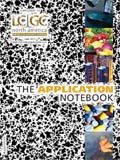Reducing Cycle Time for Analysis of 1,4-Dioxane Using an Automated Purge and Trap Sample Prep System
The Application Notebook
With advances in instrumentation and without regulatory method constraints, 1,4-dioxane can be detected at the part-per-billion (ppb) level, despite its poor purge efficiency. This application will manipulate purge and trap, as well as GC–MS parameters, to create a more efficient method to reduce cycle times. This study will utilize a Teledyne Tekmar Atomx Automated Sample Prep System in conjunction with an Agilent 7890/5975 GC–MS. A linear calibration and method detection limits (MDLs) for 1,4-dioxane will be established using this method.
With advances in instrumentation and without regulatory method constraints, 1,4-dioxane can be detected at the part-per-billion (ppb) level, despite its poor purge efficiency. This application will manipulate purge and trap, as well as GC–MS parameters, to create a more efficient method to reduce cycle times. This study will utilize a Teledyne Tekmar Atomx Automated Sample Prep System in conjunction with an Agilent 7890/5975 GC–MS. A linear calibration and method detection limits (MDLs) for 1,4-dioxane will be established using this method.
1,4-dioxane is commonly analyzed in water using purge and trap concentration to prepare the sample for evaluation by GC–MS. Because of the poor purge efficiency of the analyte, normal purge and trap methods must be modified to detect 1,4-dioxane at the part-per-billion level. This method also utilizes an Agilent 7890A/5975C with Triple Axis Detector in Selected Ion Monitoring (SIM) mode to provide the increased sensitivity required by this low-level analysis.
For this study, an Atomx Automated Sample Prep System was used in conjunction with a GC–MS system. This "all-in-one" autosampler allows for complete automation of sample preparation for the analysis of soil and liquid samples for purge and trap. Through the features the Atomx provides, such as the 80-position sample tray and standard addition vessels, efficiency and throughput can be greatly increased, leading to cost and time savings.
Utilizing an Agilent 7890/5975 GC–MS system, a linear calibration was performed and percent relative standard deviation (%RSD) and MDLs were determined for 1,4-dioxane, using a 5-mL purge volume.

Figure 1: Extracted ion chromatogram of a 10 ppb 1,4-dioxane standard.
Experimental Conditions
The Atomx Automated Sample Prep System was coupled to an Agilent 7890A/5975 GC–MS with Triple Axis Detector for analysis. Teledyne Tekmar's proprietary #9 trap was the analytical trap utilized. The GC was configured with an Agilent DB-624 20 m × 0.18 mm × 1.0 µm column. A 50-ppm working calibration standard was prepared in methanol.
Calibration standards were prepared in 50-mL volumetric flasks filled to volume with de-ionized water over a range of 1–500 ppb. Samples were transferred to headspace-free 40-mL vials for analysis. The internal standard (IS) was prepared in methanol at a 50 ppm concentration and added to each sample, bringing the final concentration of 50 ppb. Agilent Chemstation software was used to process the calibration data.
Results and Conclusions
Relative response factors were evaluated for linearity and %RSD, which were 0.9998 and 5.12, respectively. The MDL was also established at 0.74 ppb for 1,4-dioxane by analyzing seven replicates at a concentration of 5 ppb. An extracted ion chromatogram for 10 ppb 1,4-dioxane standard can be found in Figure 1.
Throughput is a major factor in lab efficiency, and therefore, profitability. Automation and optimized purge and trap methods can greatly reduce sample preparation and overall cycle times. This study demonstrates the capabilities of the Teledyne Tekmar Atomx Automated Sample Prep System coupled with an Agilent 7890/5975 GC–MS to detect 1,4-dioxane at the ppb level. By optimizing the purge parameters, without compromising sensitivity, throughput can be greatly increased, leading to cost and time savings.

Teledyne Tekmar
4736 Socialville Foster Rd., Mason, OH 45040
tel. (800) 874-2004, fax (531) 229-7050
Website: www.teledynetekmar.com

Accelerating Monoclonal Antibody Quality Control: The Role of LC–MS in Upstream Bioprocessing
This study highlights the promising potential of LC–MS as a powerful tool for mAb quality control within the context of upstream processing.
Using GC-MS to Measure Improvement Efforts to TNT-Contaminated Soil
April 29th 2025Researchers developing a plant microbial consortium that can repair in-situ high concentration TNT (1434 mg/kg) contaminated soil, as well as overcome the limitations of previous studies that only focused on simulated pollution, used untargeted metabolone gas chromatography-mass spectrometry (GC-MS) to measure their success.
Prioritizing Non-Target Screening in LC–HRMS Environmental Sample Analysis
April 28th 2025When analyzing samples using liquid chromatography–high-resolution mass spectrometry, there are various ways the processes can be improved. Researchers created new methods for prioritizing these strategies.
Potential Obstacles in Chromatographic Analyses Distinguishing Marijuana from Hemp
April 28th 2025LCGC International's April series for National Cannabis Awareness Month concludes with a discussion with Walter B. Wilson from the National Institute of Standard and Technology’s (NIST’s) Chemical Sciences Division regarding recent research his team conducted investigating chromatographic interferences that can potentially inflate the levels of Δ9-THC in Cannabis sativa plant samples, and possible solutions to avoid this problem.

.png&w=3840&q=75)

.png&w=3840&q=75)



.png&w=3840&q=75)



.png&w=3840&q=75)




















